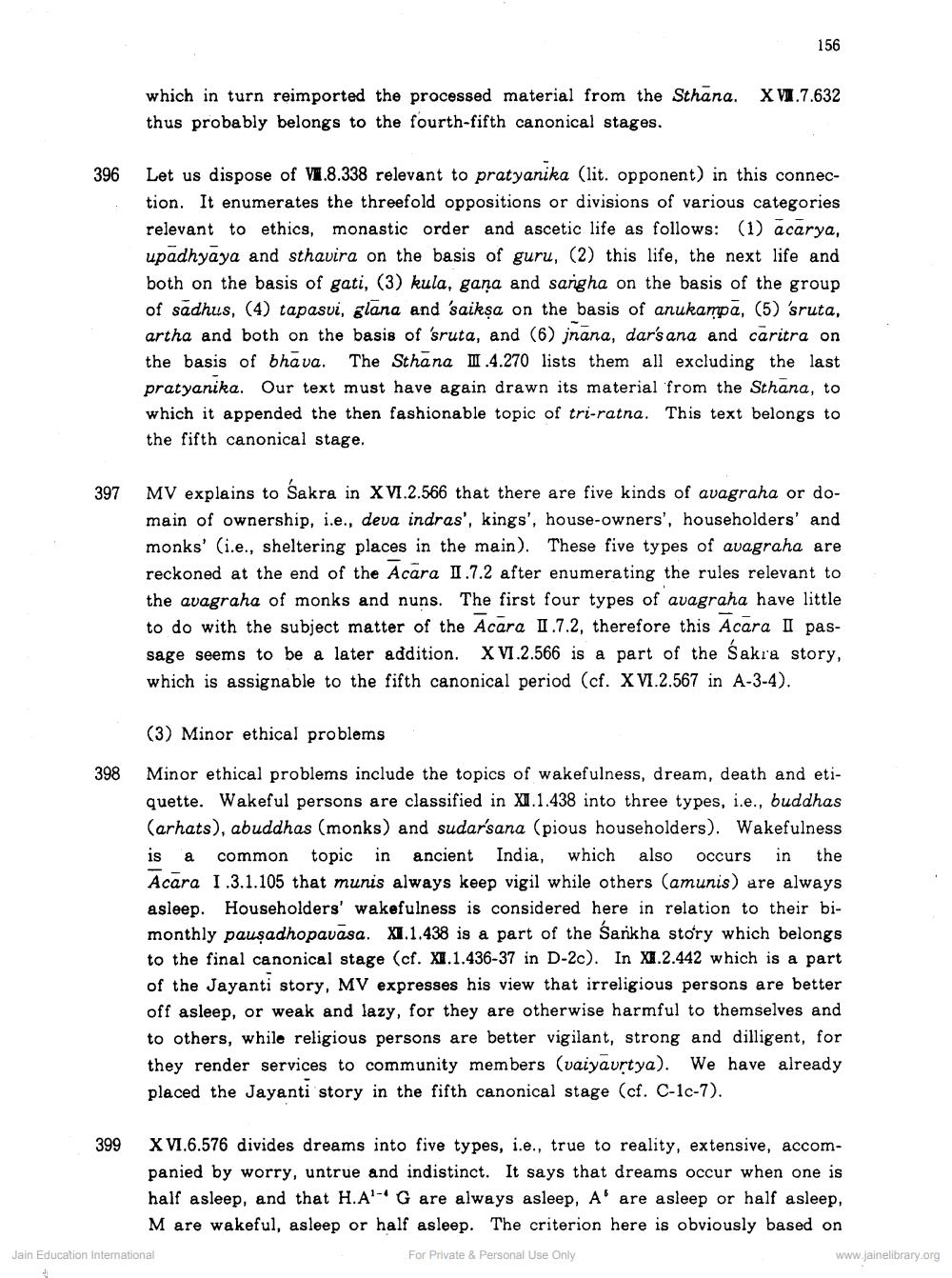________________
156
which in turn reimported the processed material from the Sthana. XVI.7.632 thus probably belongs to the fourth-fifth canonical stages.
396
Let us dispose of V.8.338 relevant to pratyanika (lit. opponent) in this connection. It enumerates the threefold oppositions or divisions of various categories relevant to ethics, monastic order and ascetic life as follows: (1) acarya, upadhyaya and sthavira on the basis of guru, (2) this life, the next life and both on the basis of gati, (3) kula, gana and sangha on the basis of the group of sadhus, (4) tapasvi, glana and 'saikṣa on the basis of anukampa, (5) 'sruta, artha and both on the basis of 'sruta, and (6) jnana, dar's ana and caritra on the basis of bhava. The Sthana I.4.270 lists them all excluding the last pratyanika. Our text must have again drawn its material from the Sthana, to which it appended the then fashionable topic of tri-ratna. This text belongs to the fifth canonical stage.
397
MV explains to Sakra in X V1.2.566 that there are five kinds of avagraha or domain of ownership, i.e., deva indras', kings', house-owners', householders' and monks' (i.e., sheltering places in the main). These five types of avagraha are reckoned at the end of the Acara 11.7.2 after enumerating the rules relevant to the avagraha of monks and nuns. The first four types of avagraha have little to do with the subject matter of the Acara 11.7.2, therefore this Acara Il passage seems to be a later addition. XVI.2.566 is a part of the sakra story, which is assignable to the fifth canonical period (cf. XVI.2.567 in A-3-4).
(3) Minor ethical problems
398
Minor ethical problems include the topics of wakefulness, dream, death and etiquette. Wakeful persons are classified in XI.1.438 into three types, i.e., buddhas (arhats), abuddhas (monks) and sudarsana (pious householders). Wakefulness is a common topic in ancient India, which also occurs in the Acara 1.3.1.105 that munis always keep vigil while others (amunis) are always asleep. Householders' wakefulness is considered here in relation to their bimonthly pausadhopavasa. X1.1.438 is a part of the Sankha story which belongs to the final canonical stage (cf. XI.1.436-37 in D-2c). In XI.2.442 which is a part of the Jayanti story, MV expresses his view that irreligious persons are better off asleep, or weak and lazy, for they are otherwise harmful to themselves and to others, while religious persons are better vigilant, strong and dilligent, for they render services to community members (vaiyaurtya). We have already placed the Jayanti story in the fifth canonical stage (cf. C-1c-7).
399
X V1.6.576 divides dreams into five types, i.e., true to reality, extensive, accompanied by worry, untrue and indistinct. It says that dreams occur when one is half asleep, and that H.A' G are always asleep, A' are asleep or half asleep, M are wakeful, asleep or half asleep. The criterion here is obviously based on
Jain Education International
For Private & Personal Use Only
www.jainelibrary.org




